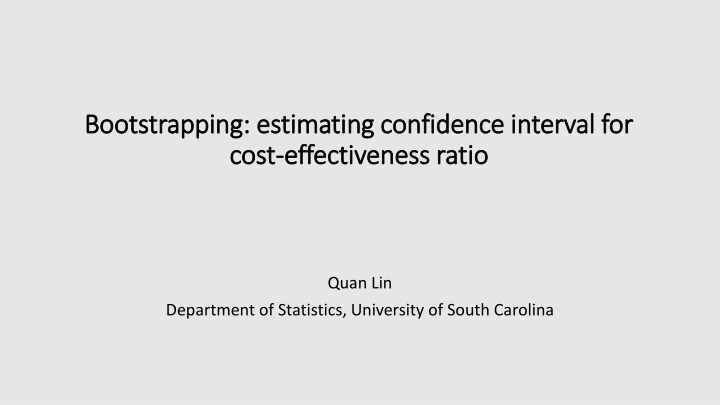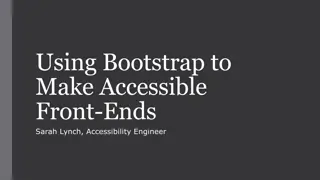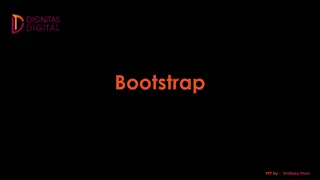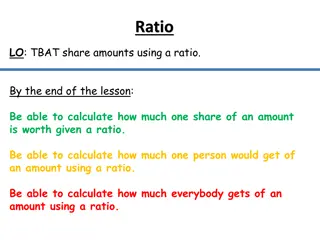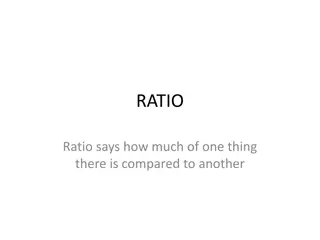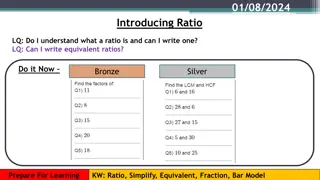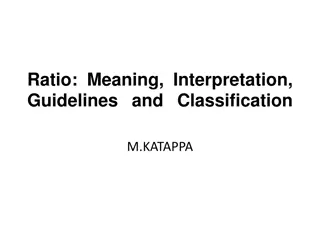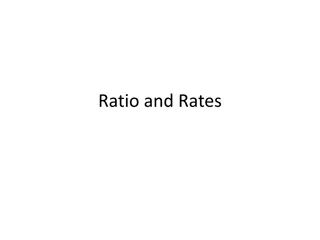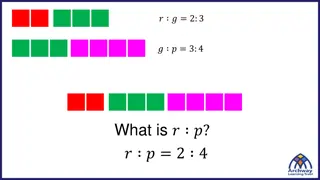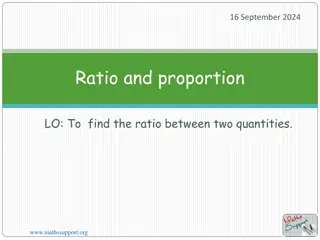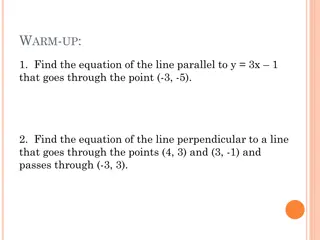Bootstrap Methodology for Cost-Effectiveness Ratios
Economic evaluations alongside clinical trials require estimating confidence intervals for cost-effectiveness ratios using bootstrap methodology to account for variability in cost and effectiveness. Resampling from samples, building empirical distributions, and applying bias correction methods are essential steps in this process.
Download Presentation

Please find below an Image/Link to download the presentation.
The content on the website is provided AS IS for your information and personal use only. It may not be sold, licensed, or shared on other websites without obtaining consent from the author.If you encounter any issues during the download, it is possible that the publisher has removed the file from their server.
You are allowed to download the files provided on this website for personal or commercial use, subject to the condition that they are used lawfully. All files are the property of their respective owners.
The content on the website is provided AS IS for your information and personal use only. It may not be sold, licensed, or shared on other websites without obtaining consent from the author.
E N D
Presentation Transcript
Bootstrapping: estimating confidence interval for Bootstrapping: estimating confidence interval for cost cost- -effectiveness ratio effectiveness ratio Quan Lin Department of Statistics, University of South Carolina
Economic evaluations are increasingly being conducted alongside clinical trials of health interventions, with resource consequences now being estimated from observations of samples of patients. Confidence intervals have been widely used in the reporting of Why use bootstrap clinical data to reflect the stochastic nature of data collected from samples of patients. However, the transfer of this methodology to economic reporting is not straightforward. For example, if we want to know more commonly used economic measures, such as cost-effectiveness ratios, what can we do?
If we DO NOT have a large sample and can NOT assume the sampling distribution is normal. Or if the standard error for test statistic is difficult to work Why use bootstrap out. The basic concept behind bootstrap is to treat the study sample as if it were the population. Thus we treat a random sample as a mini version population and resample from it to simulate new samples.
Put into use The aim of this presentation is to review the principles of bootstrap methodology for estimating confidence intervals for cost- effectiveness ratios when both cost and effectiveness are variable, and to highlight its practical application through an examples using empirical data from clinical trials. How about the statistic we concern involves two or more variables
Resampling and Bootstrap Step1: Select with replacement from the original sample to create random samples, and the samples should have the same size as the original one. Step2: The statistic of interest is calculated from each resample, and these bootstrap estimates are then used to build up an empirical distribution for the statistic. Step3: The number of bootstrap resamples should be at least 1000 when the distribution is to be used to construct confidence intervals.
CI inference Percentile-based methods is often used for generated bootstrap distribution to determine the limits of the confidence interval. What if the statistic calculated from sample is a BIASED estimate of the true population? To adjust for potential bias in the bootstrap estimates, the bias-corrected percentile method will be considered.
Bias-corrected method ? Bias-correcting constant : ?0= ?=1 ?(????? ?????) ? , the proportion of bootstrap estimates which are less than or equal to the estimate from the original sample. If the estimate from the original sample does fall at the 50th percentile, the resulting bootstrap confidence interval will be symmetric around the original estimate. If it does not, the bias-correcting constant allows for the confidence interval to be asymmetrical around its expected value. Use this bias-correcting constant to modify the percentiles used to calculate the limits of the desired confidence interval : lower bound: ?? 2+ 2?0 100 ??????????, ????? ?????: ?1 ? 2+ 2?0 100 ??????????.
Incremental cost-effectiveness ratio (ICER) is the measure primarily used to compare the cost- Example: Cost- effectiveness comparison effectiveness of the experimental group to the control group. ?? ?? ?? ??, where ??and ??are the mean costs, and ??and ??are the mean effects for the ICER = treatment and control groups, respectively.
Cost-effectiveness comparison Then 145 women were randomized to immediate colposcopy group and 158 were randomized to cytological surveillance group. The average cost and effectiveness can be calculated as follows: 82.02 54.42 = 145.26 0.46 0.27 This process was repeated 1000 times. The 1000 bootstrap estimates of the ICER then provided the empirical sampling distribution from which the limits of the confidence interval would be taken.
Example : Cost-effectiveness comparison 485 of the 1000 bootstrap ICER estimates had values which were less than or equal to 145.26 (the estimate obtained from the original trial data). Thus the bias correcting constant, ?0is calculated to be: ?0= 1(0.485) = -0.0105 This results in a 95% bootstrap bias-corrected confidence interval for the ICER of 94.01 to 309.33.
Bias-corrected Confidence Intervals in R
Bootstrap cautions Percentile method for creating CI only work if the sampling distribution is smooth and symmetric. Bootstrap can perform poorly if the sampling distribution is highly skewed or looks spiky with gaps. Consider the bias corrected percentile method and the accelerated bias corrected method. Range preserving and transformation invariant. Works well for a variety parameters. Second-order accurate.
Some concerns Theoretical assumption of the bootstrap, that the second moment exists, may be questionable if there is a distinct possibility of obtaining a zero or near-zero value on the denominator of the ICER. When the initial sample is small, is bootstrap still applicable.
Theoretically, a CI from bootstrap percentile can be created for any Summary parameter or test statistics, as long as the sampling distribution is approximately smooth and symmetric.
